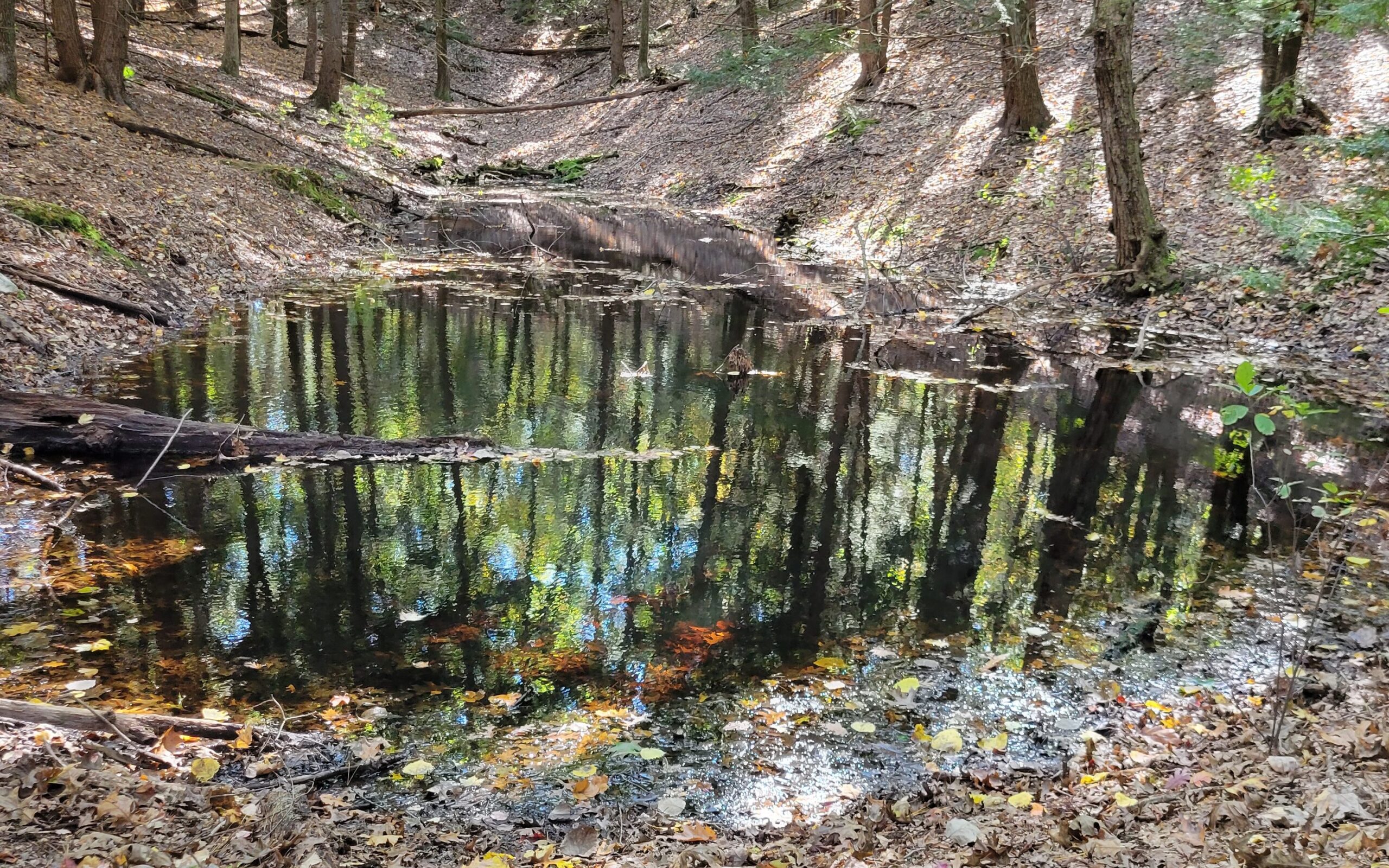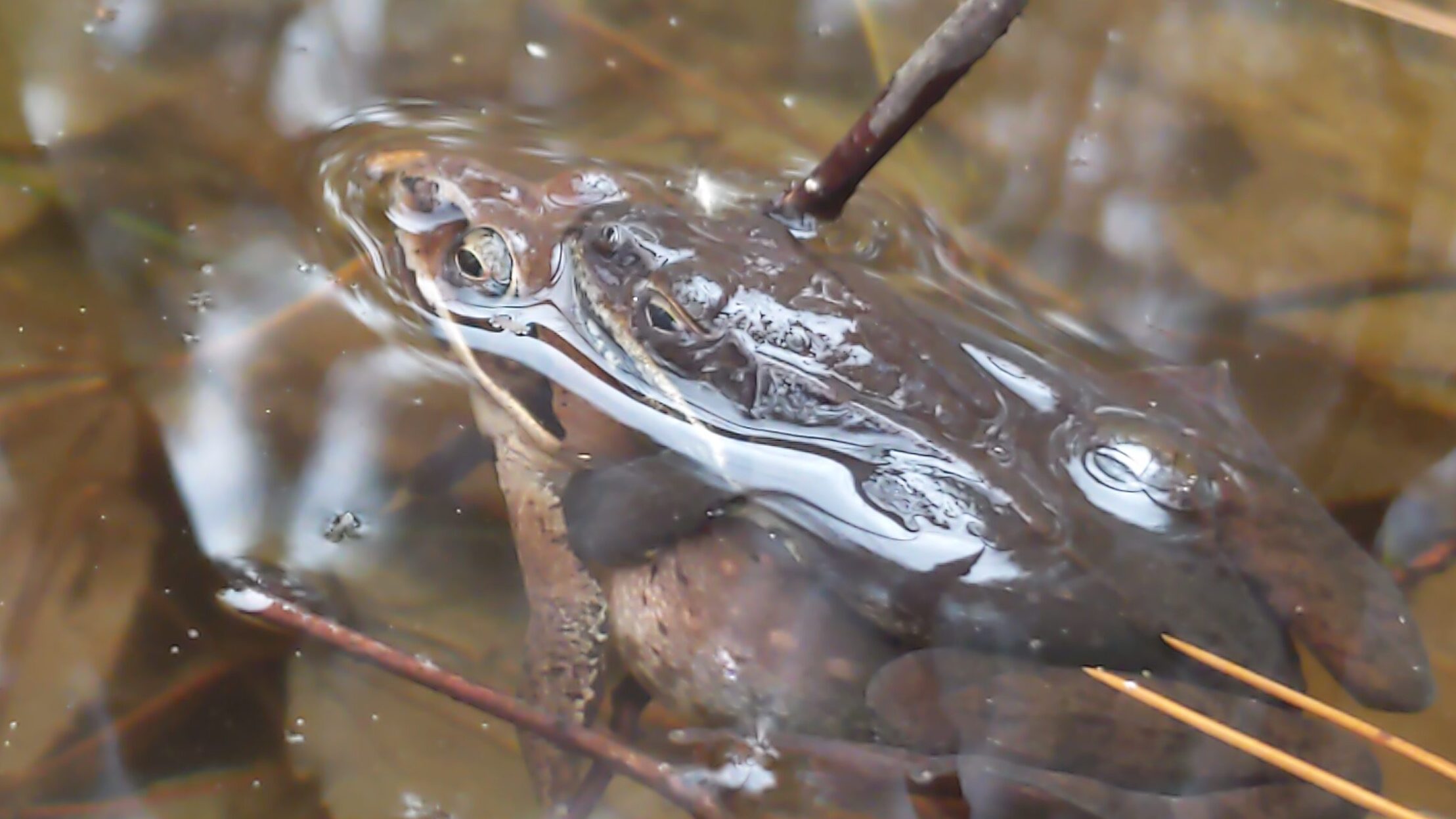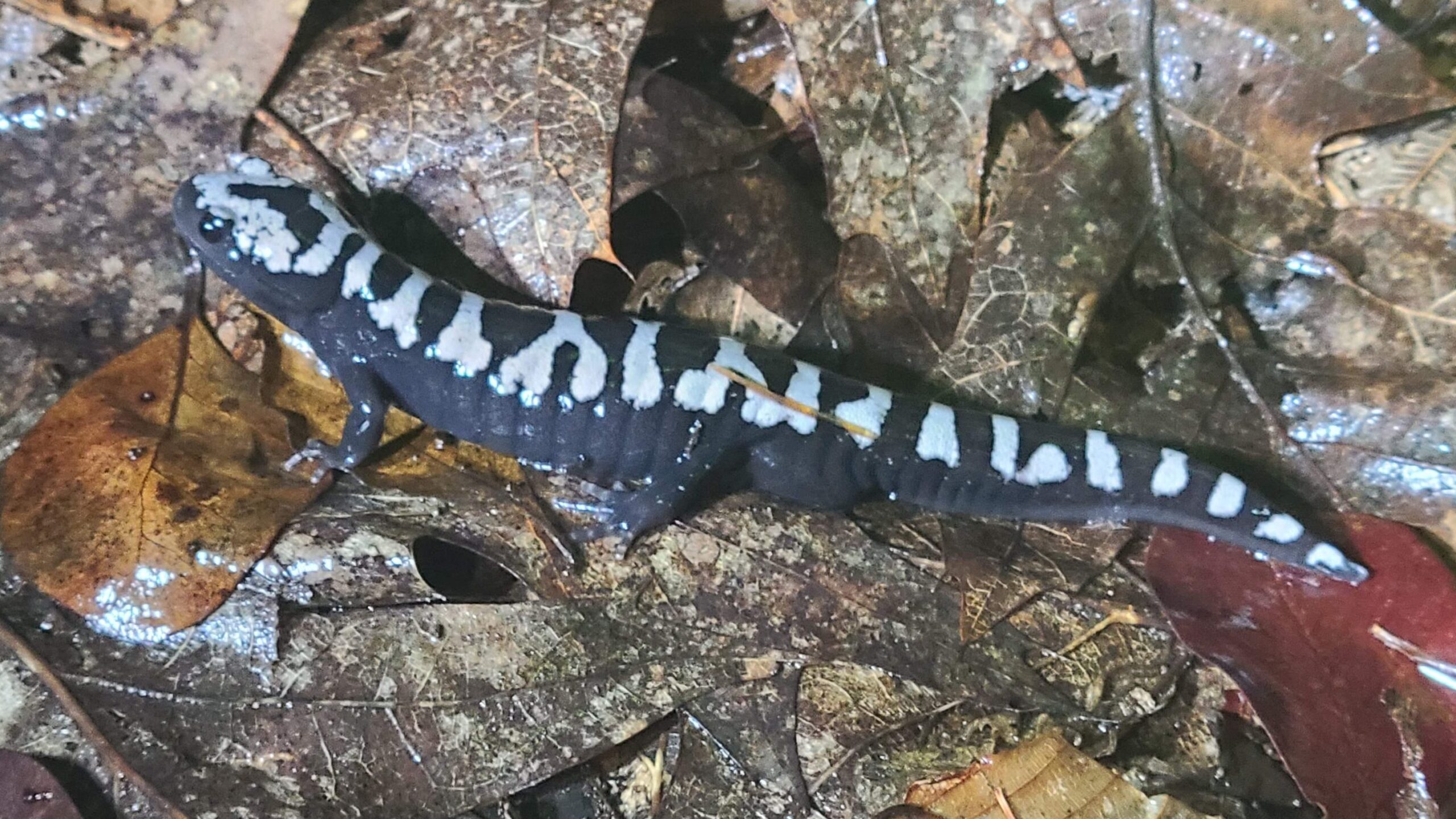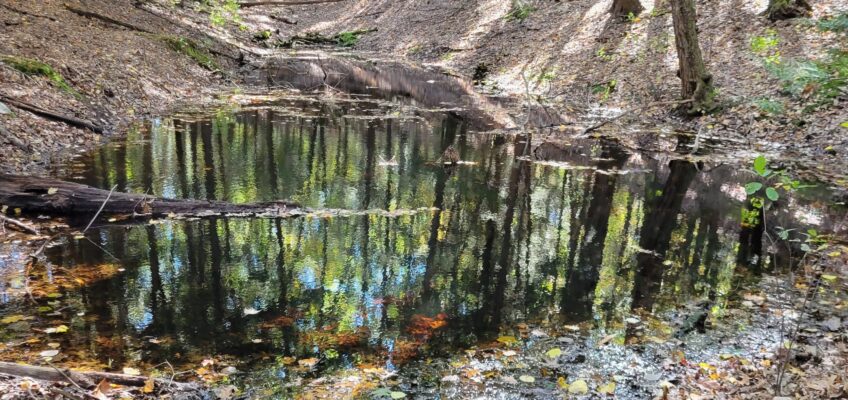
Vernal pools (or “spring” pools if you translate the Latin) aren’t only around in the spring, but they do spring to life at this time of year. The warming weather and spring rains trigger a host of changes in the pools, with frogs and salamanders migrating to the pools to lay their eggs, fairy shrimp hatching and growing, and many insects also completing parts of their lifecycle. If you’ve been out near a vernal pool in the past week or two, you may have noticed some of the changes, especially the sounds of frogs calling loudly.
If you would like to investigate these unique and captivating habitats for yourself, you can use the website MassMapper to find a nearby vernal pool to check out. Here’s how:
On the website, in the right handed column select “Conservation/Recreation”, then within that category select “Natural Heritage Data”. In this category there are two options for identifying vernal pools, an “NHESP Certified Vernal Pools” option which will highlight all certified vernal pools, and “Potential Vernal Pools” which will highlight potential vernal pools that have not yet been certified. Selecting one or both of these options will highlight hundreds of the certified or potential vernal pools in Massachusetts, you can then use the location search bar at the top right of the map to identify the vernal pools in your area!

What is a vernal pool?
Vernal pools are often small, shallow “ponds” in the woods, but they can come in all different shapes and sizes. Some can be quite large and look like swamps, while others can be tiny depressions that only fill with water after big rainstorms. The most important defining feature of a vernal pool is that they don’t have permanent fish populations, usually because they dry up completely at least once in a while. Being fish-less makes vernal pools a safe haven for a number of species of amphibians (frogs and salamanders) and invertebrates, which often cannot reproduce or complete their life cycle successfully when exposed to predation by fish.
Species that are largely dependent on the fish-less conditions found in vernal pools for their reproduction and development are called vernal pool indicator species. Massachusetts regulations define five amphibian species as “obligate” vernal pool species or vernal pool indicators: the wood frog, spotted salamander, marbled salamander, blue-spotted salamander, and jefferson salamander. Additionally, at least two species of fairy shrimp, fairly large freshwater crustaceans, live in Massachusetts vernal pools, and you might see some of them if you visit a vernal pool.

Wood Frogs are often the first amphibian species to begin mating in the spring here in Massachusetts. You can hear the adult males making a loud chorus of “quaking” duck-like sounds as they call to females to mate. This sound is often noted as an early sign of the spring season.
Spotted Salamanders (also called yellow-spotted salamanders) on the other hand, if you’re lucky, can be seen on rainy spring nights moving through the woods (or occasionally across the roads, at their peril), as they move to and from vernal pools. Within the pools, male spotted salamanders may gather in large groups known as “breeding congress”, where males court females. The closely related blue-spotted and jefferson salamanders, which have extensively hybridized in New England, migrate to vernal pools to mate at about the same time of the year as the spotted salamanders, but rather than forming a congress, these species engage in elaborate courting dances in pairs.

Photo by Tim Beaulieau
Marbled Salamanders also depend on vernal pools, but they actually don’t go to the pools to lay their eggs until the fall. Their larvae spend the winter in the vernal pool, active even in frigid water under the ice, getting a big head-start on the other vernal pool species who won’t hatch until the spring. By this time of year, they’re big enough to eat the hatchling larvae of spotted salamanders and wood frogs.

Fairy Shrimp are also dependent on fish-free vernal pools and there are three resident species in Massachusetts, the common springtime fairy shrimp, the knobbedlip fairy shrimp, and the rare intricate fairy shrimp. Fairy shrimp eggs that lie in suspended animation along the dry margins of vernal pools often hatch as the vernal pool fills, which may happen any time from late autumn through spring. These species lay two types of eggs while the vernal pool is still flooded, summer eggs which hatch within a matter of days, and winter eggs which can stay dormant for several years surviving years of droughts. The winter eggs are hard-shelled and able to withstand both drying and freezing temperatures. These are the eggs that will hatch and repopulate a vernal pool in the early spring.

